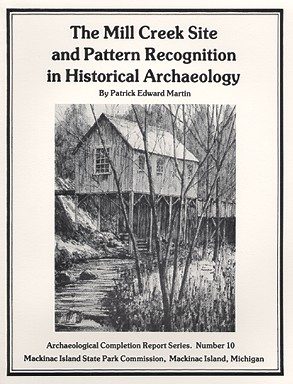Archaeological Completion Report Series, Number 10
From the book: “The Mill Creek site (20CN8) is a farm and mill complex located on the Straits of Mackinac in northern Michigan and was occupied during the late eighteenth and early nineteenth centuries. Excavated between 1972 and 1975 … the site yielded a wide variety of structural and artifactual data reflecting a diverse range of activities. These data, combined with an extensive documentary survey, offer insights into civilian and military life during a critical period in the history of this important region.
Mill Creek site data are used as a vehicle to examine the utility and validity of Stanley South’s artifact patterns, descriptive quantitative models of British-American material culture. Artifact frequencies from 39 sites and archaeological contexts are also analyzed by means of discriminant function analysis to explore the relationships within and between groups. Other examples of pattern analysis are examined, and two alternative grouping of sites are evaluated.
South’s patterns are supported as both descriptive and analytical constructs. Three tentative hypotheses to explain their presence and persistence are tested, and a general functional explanation is discussed.”
“This detailed report analyzes the collected artifacts and the written documents, reveals aspects of life at the site (circa 1790-1839) and tests various hypotheses to explain the patterns of artifact location and distribution.” – Richard Hathaway Michigan History












